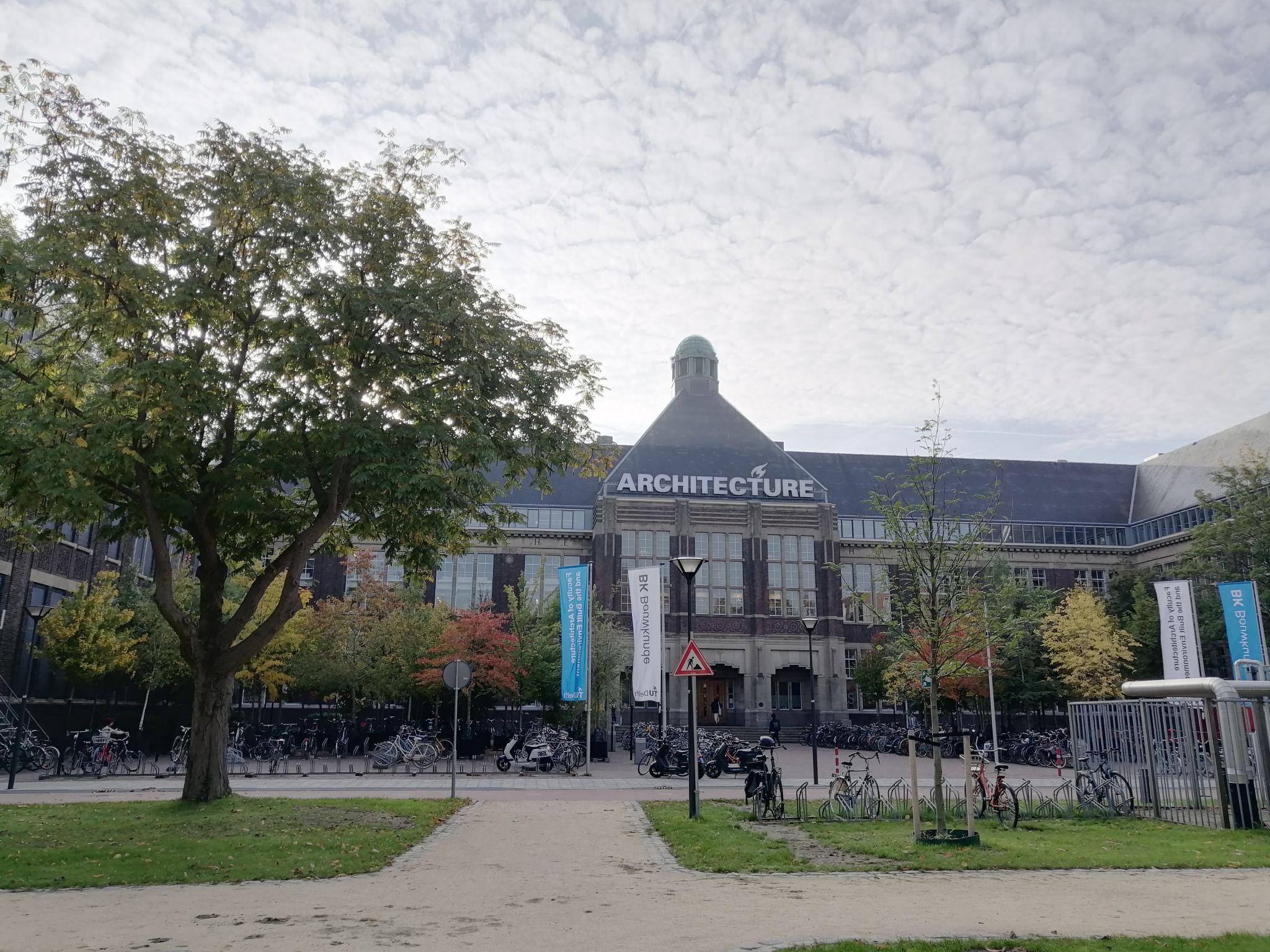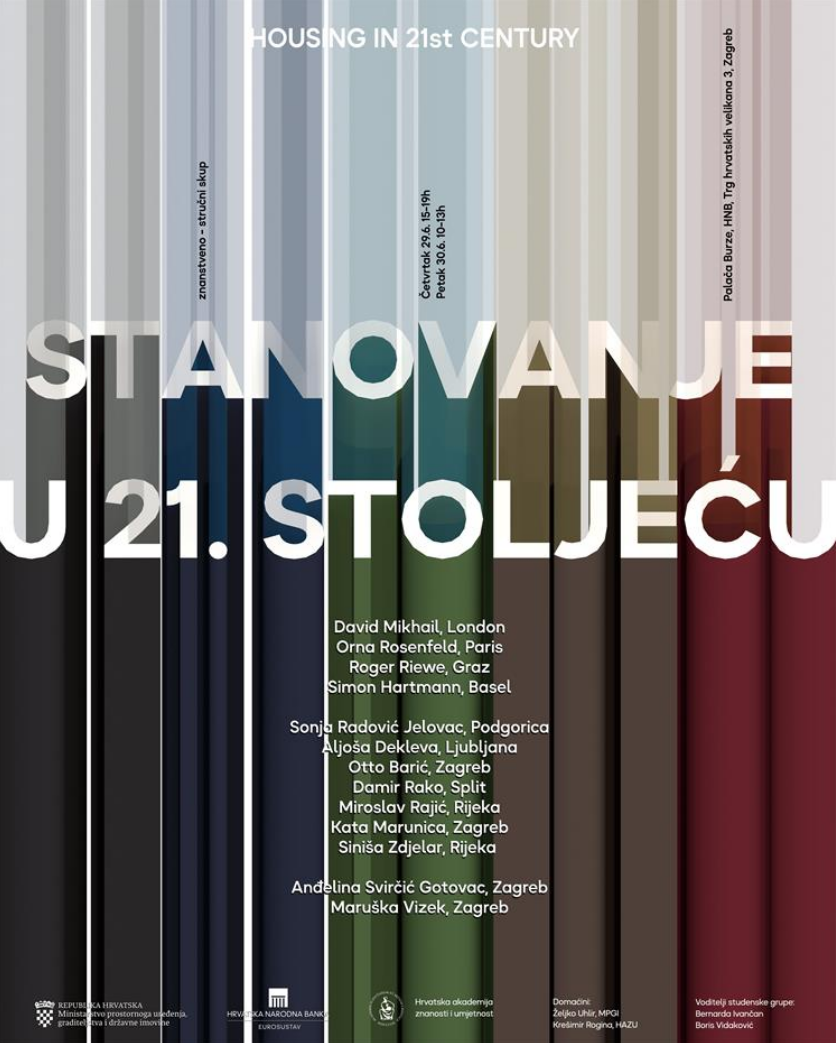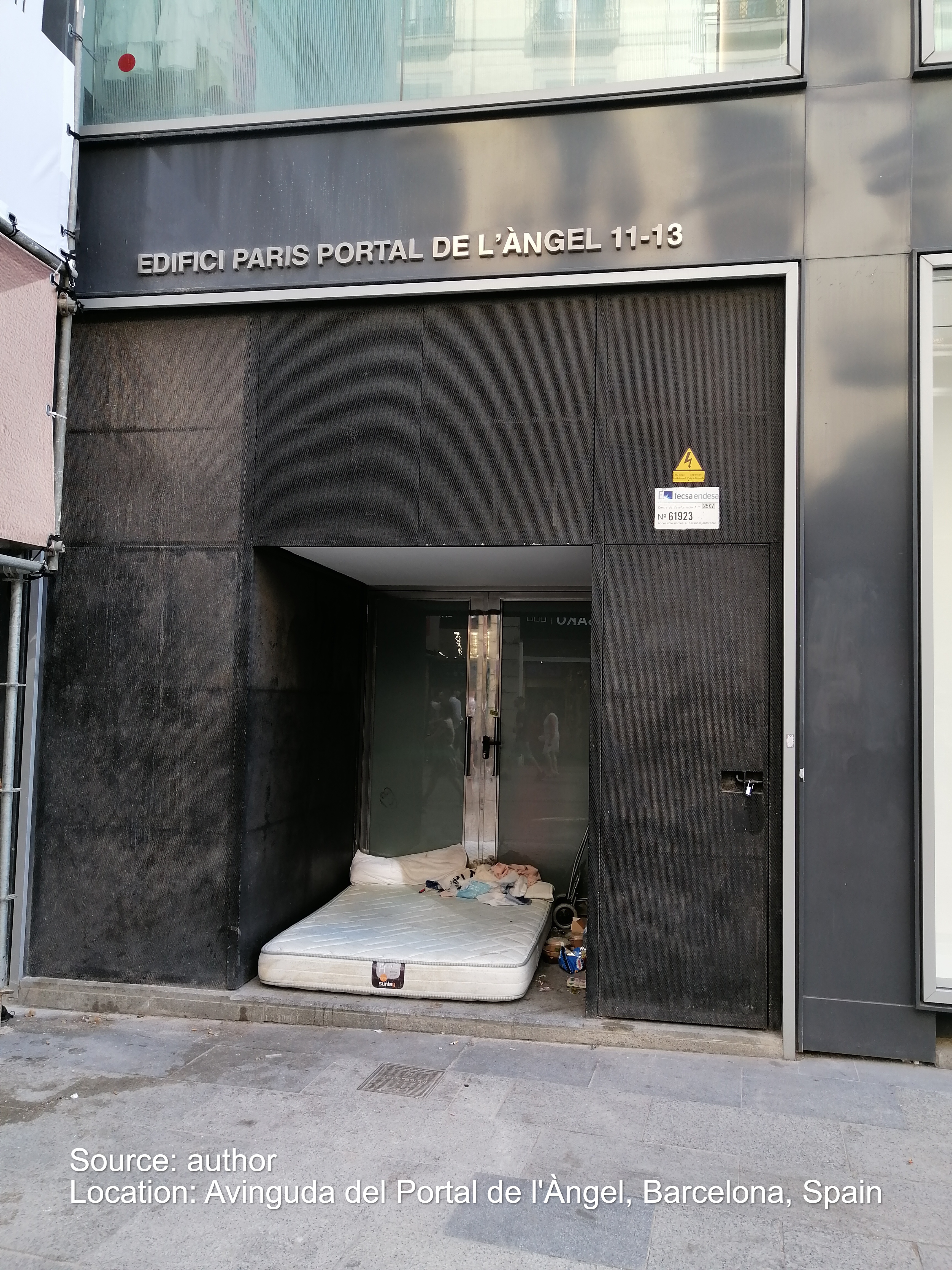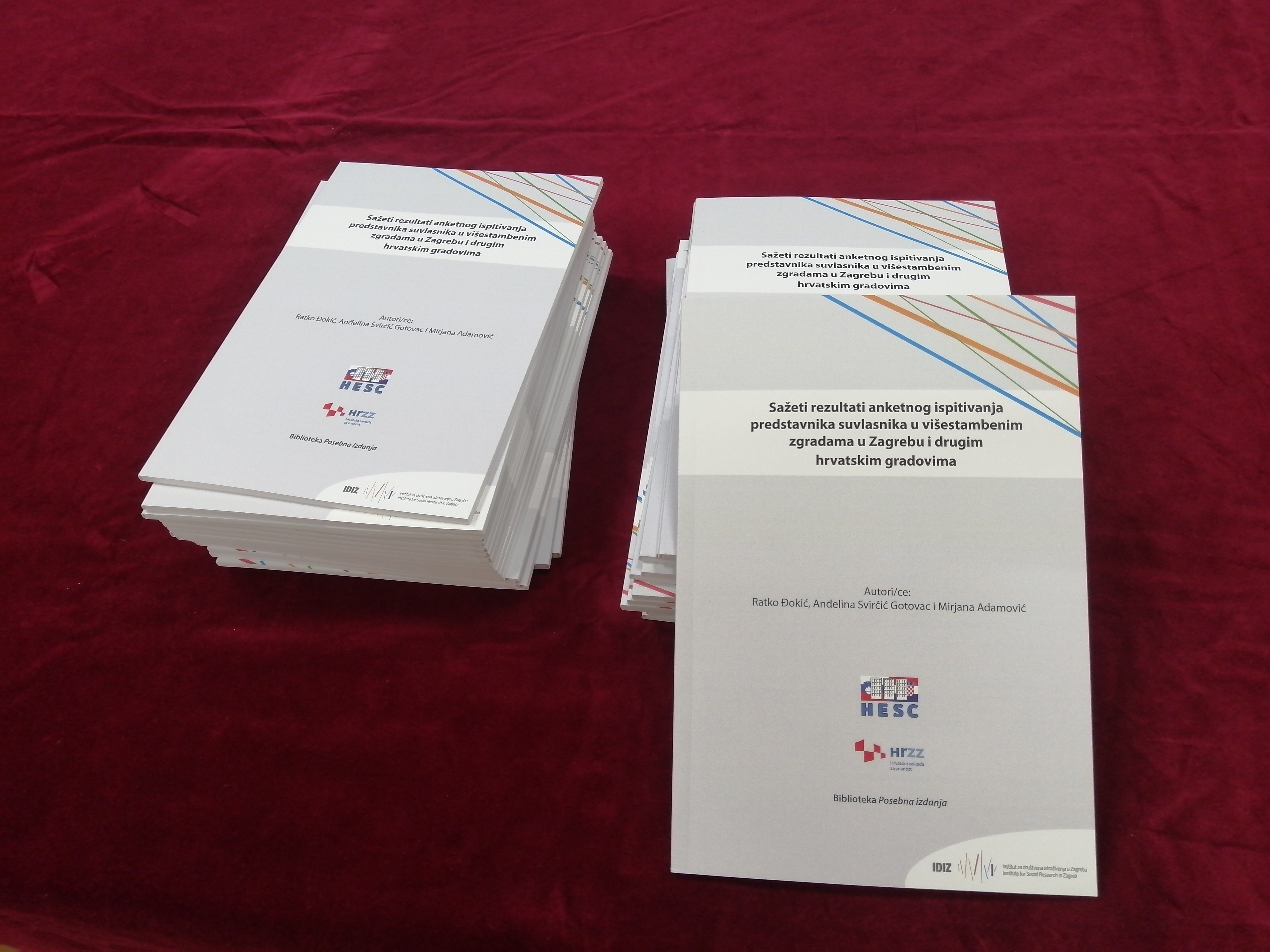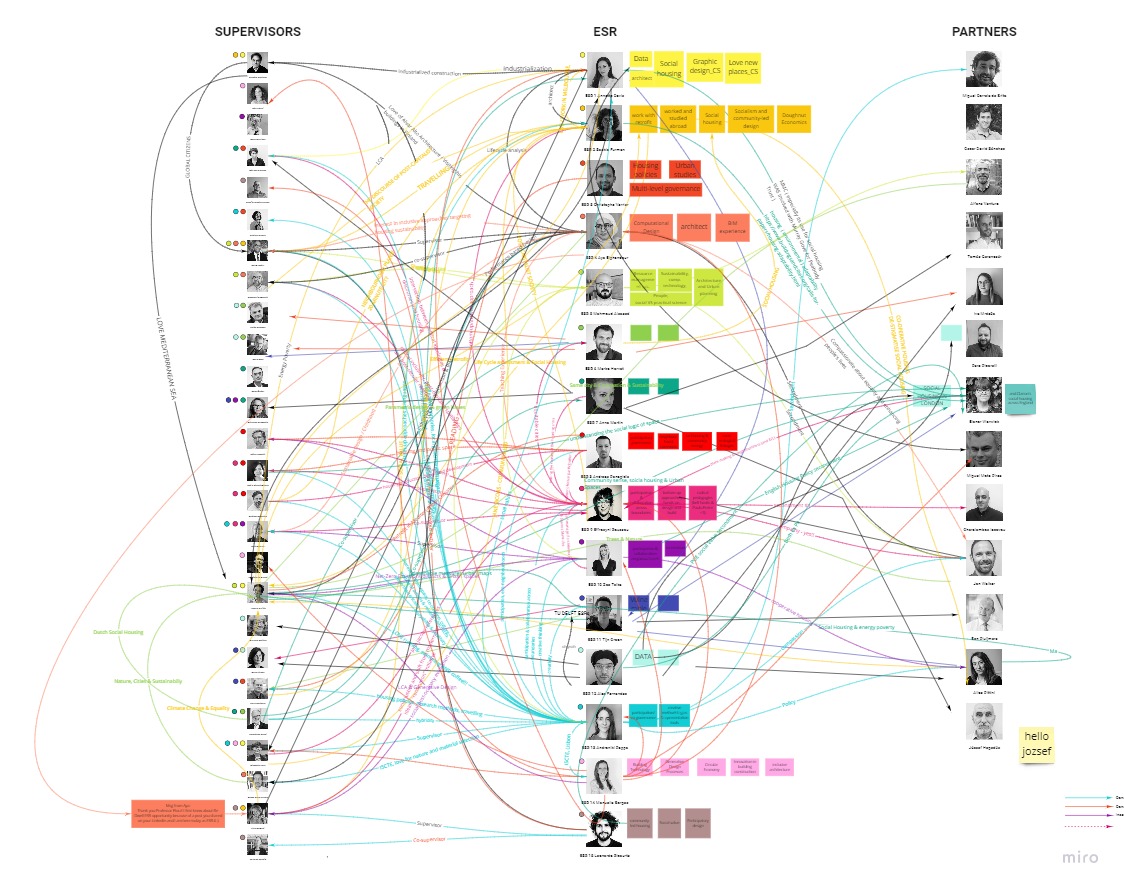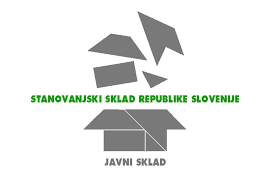
Housing Fund of the Republic of Slovenia
Created on 04-07-2023
National Housing Fond of the Republic of Slovenia: from inception to present day
The Republic of Slovenia proclaimed its independence in 1991, and the new state was obliged to create proper housing for its citizens. The National Housing Fund of the Republic of Slovenia (the Fund) was founded in October 1991 under the National Housing Act (the Act) in order to oversee the implementation of the National Housing Programme (NHP) in collaboration with other governmental bodies and agencies at a national and municipal level (HFRS, 2021; European Commission, 2017). According to the Act, the proceedings from the privatisation were to be distributed as follows: 20% to the Fund, 30% refunded to tenants that relinquished the rights to purchase dwellings and 50% to purchase new housing (Sendi, 1995). The NHP aimed to ensure a higher standard of living for vulnerable groups. According to Kerbler and Kolar (2018), the four main objectives of the NHP are to create a balanced supply of suitable housing, to facilitate access to housing, to improve the quality and functionality of housing and to increase the residential mobility of the population. Over the years, the Fund's tasks have extended from policy implementation to investment, management and construction activities.
After Slovenia gained independence in 1991, there was a massive privatisation of the public housing stock (Cirman, 2017). Overseeing the privatisation was one of the first tasks for the newly created Fund in Slovenia, as the role of the state in the housing market was slowly diminishing (Cirman & Mandič, 2013). Provisions from the privatisation of public dwellings were allocated to the Fund, and over the period of 30 years of the Fund’s existence, almost 3,000 housing units were sold at favourable prices (HFRS, 2021).
Originally, one of the Fund’s main tasks was to provide favourable loans (around 3%) mainly to non-profit housing organisations so that they could construct housing units to accommodate young families with children, single-income families, the physically handicapped and three-generation households (Sendi, 1995).
At present, there is a ten-year strategy in place, which is set to finish in 2025, that aims to increase the supply of dwellings and to support disadvantaged and vulnerable people
The Fund's main activities currently include promoting investment in new construction to increase the public rental housing stock through long-term loans, housing saving schemes, direct investment in projects, management of the existing housing stock and the development of pilot projects. (HFRS, 2021). Under the NHP, for each public dwelling sold, the Fund is obliged to dedicate one dwelling for rental use (Cirman, 2017). The Fund develops its own projects as well as projects in cooperation with municipal housing associations and housing cooperatives. The current strategy runs from 2015 to 2025 and focuses on renewing the housing stock, increasing affordability through various financial instruments such as mortgage insurance and building new housing (BMVBS, 2009; European Commission, 2017). Among other objectives, the Fund plans to acquire up to 500 public rental housing units, 150 assisted rental housing units and 50 places in retirement homes, as well as up to 3,280 public rental housing units for young families in the period 2021-2025.
One of the recently completed projects co-financed by the Fund is the construction of housing for young people and seniors in the city of Ljubljana. The Housing Fund received a favourable loan of €50 million from the Council of Europe Development Bank (CEB) for the construction of 500 rental flats for 498 families and individuals. According to the director of the Housing Fund, Črtomir Remec, on its completion in 2021, this will be the "largest housing construction in independent Slovenia". Some similar projects are in the development phase while others are scheduled to start in the near future, co-financed by the CEB and the Housing Fund. Moreover, around €60 million for affordable housing has been obtained from European Commissions Recovery and Resilience Fund.
The Funds’ structure
The founding body of the Fund is the Republic of Slovenia. It is governed by a supervisory board consisting of two members of the Ministry of Spatial Planning, one member of the Ministry of Finance, one member of the beneficiaries and one member of the legal department. In addition to the Fund, there are 13 registered municipal public funds in Slovenia that are responsible for implementing municipal housing programmes.
The day-to-day operations of the Fund are managed by 40 employees (31 December 2020) and the total assets of the Fund amount to more than €400 million (HFRS, 2021).
The main sources of funding come from the sale of housing units, transfers from the state budget, foreign and domestic grants, the issuance of the Fund's securities, the sale of other non-operating assets under the Fund's management, and income from the rental of housing and long-term loans. The Fund owns two subsidy companies, a building management company and a property consultancy company, employing around 30 and 20 people respectively. At the end of 2020, there were 3,825 public rental housing units managed by the Fund. It is modernising its platform to better manage rental housing applications (HFRS, 2021).
Shortcomings of the Fund’s operations
At the beginning of the Fund's operation in the early 1990s, the Minister of Environment, who was one of the authors of the Housing Act on the basis of which the Housing Funds had been established, claimed that 20% of the proceeds from the sale of the housing stock owned by the local authorities had not been paid into the Housing Fund by the local authorities, as stipulated in the Act. Due to the lack of these funds, the objectives of the fund were not achieved in the first years of its operation and its development was hampered. (Sendi, 1995). Other observations by the European Commission (2017) state that the programme is not on the right track because of the lack of legislation to facilitate new pilot projects and innovative solutions. This report also points to the underfunding of the fund. It estimates that at least 220 million euros are needed to achieve the goals, while claiming that the administration, with 40 staff, is not sufficiently staffed to fulfil all the tasks. Moreover, since the rentals the Fund charges are below market levels, it has difficulty attracting private companies to invest in social housing. The last remark in the report is that homeless people, people who have been evicted and live in overcrowded flats, do not fall within the scope of the fund's activities (see also FIlipovič Hrast, 2019).
Final remarks
Compared to neighbouring EU Member States, namely Croatia, the Fund is seen as an innovation in the context of the post-privatisation period. For example, after its privatisation in the early 1990s, Croatia sold almost all of its public housing stock without developing a vision or strategy to reinvest the proceeds in affordable housing. In contrast, Slovenia had the institutional capacity to establish a national governing body to oversee and implement the housing strategy and take responsibility for the construction and maintenance of the public and social housing stock. Since then, the Fund has become the cornerstone of any future housing policy development. With its 30 years of experience and expertise, the Fund is an example of best practise and a goal that countries with similar circumstances should strive for, namely post-socialist countries with high levels of home ownership and a non-existent national housing strategy.
M.Horvat (ESR6)
Read more
->

Housing Partnership of the Urban Agenda for the EU
Created on 20-11-2024
Introduction
In 2016, during the Dutch Presidency of the Council of the EU, the "Pact of Amsterdam" (the Pact) was signed. This pivotal document was endorsed at an informal gathering of EU Ministers responsible for urban affairs on 30 May 2016. The Pact served as the foundation for the Urban Agenda for the EU, a comprehensive multi-level agreement whose aim was to enhance the urban dimension in European legislation and policymaking. Within this agreement, twelve priority themes were outlined. The fourth priority specifically concerns housing, which is the focus of this case study.
The Urban Agenda for the EU has become the overarching governance framework that promotes co-operation at all levels of governance to facilitate the implementation of sustainable urban development policies. Within the framework of partnerships involving voluntary co-operation between relevant stakeholders, each priority theme is addressed by a specific partnership. In this context, the Housing Partnership has been entrusted with a three-year mandate to develop the Action Plan, a comprehensive document based on the results of the partnership’s co-operation. The Action Plan is the result of the three-year partnership and is divided into three parts. The most important part is the twelve actions, which are divided into three groups: “Better Regulation,” “Better Knowledge and Governance” and “Better Funding”. These actions are explained below.
The other themes for these partnerships encompass urban poverty, inclusion of migrants and refugees, air quality, sustainable use of land and nature-based solutions, circular economy, climate adaptation, energy transition, urban mobility, jobs and skills in the local economy, digital transition and innovative and responsible public procurement.
The European Commission (EC) does not have a specific mandate for housing, leaving the development of housing policies and strategies to individual Member States and local authorities. Nevertheless, one of the objectives included in the Pact was "to explore public and affordable housing, state aid rules and general housing policy".
At the EU level, there is a growing demand for housing, yet the supply of affordable housing fails to keep pace with this increasing need. A 2018 report (Fransen et al., 2018, p. 41) revealed that the EU faces an annual shortfall of €57 billion in affordable housing investment. Housing provision varies significantly across the EU Member States, with the global financial crisis causing a reduction in affordable housing investment. This decline has contributed to a surge in housing prices within the market. Thus, the European Systemic Risk Board (ESRB) has issued a cautionary statement to specific Member States, pointing to a possible overheating of the housing market, which could lead to increased vulnerability of the residential real estate sector (ESRB, 2022).
In 2021, more than 10% of the EU population was overburdened by housing costs (Eurostat, 2023). Therefore, national and local authorities urgently need workable policy solutions to make housing more affordable. Furthermore, around 48% of young adults in the EU live with their parents (Housing Partnership, 2018, p. 63), a situation that could have a negative economic and demographic impact across the EU in the near future.
The Housing Partnership's key findings reveal several significant trends: an escalating number of EU citizens across diverse income brackets facing housing affordability issues, housing prices outpacing income growth, a growing fragmentation in the housing market intensifying spatial and social segregation, and a decline in overall investment in affordable housing. The partnership comprised a range of partners with the city of Vienna (Austria) and Slovak Republic as coordinators, and various institutional and academic stakeholders (Housing Partnership, 2018).
Main outcomes of the Action Plan
As outlined in the Action Plan, the Housing Partnership encompasses on three key areas: firstly, a territorial emphasis on cities; secondly, a dedication to affordable housing; and thirdly, a focus on various housing themes.
Actions aiming at better regulation
Over the course of the three-year partnership, a list of twelve actions and recommendations was produced to address the housing crisis.
- Action 1 Guidance on EU regulation and public support for housing – special aim is to provide clear guidance on public support for social and affordable housing in European cities.
- Action 2 Capacity building for the application of state aid rules in the affordable housing sector at a city level
- Action 3 Revision of the Services of General Economic Interest (SGEI) decision with regard to the narrow target group of social housing
Actions aiming at better knowledge and governance
- Action 4 Affordable housing good practice database that proposes gathering of the best practices of the social and affordable housing sector, to foster learning and knowledge exchange on affordable housing provision in European cities
- Action 5 Policy guidance for the supply of social and affordable housing in Europe, aiming to offer guidance for European cities on how to increase affordable housing supply
- Action 6 Exchange programme for urban housing professionals
- Action 7 Monitoring system for affordable housing in the European Union
- Action 8 Exchange on affordable housing at member-state level, by establishing Housing Focal Points and the informal Ministerial Meetings in Housing to allow for continuous exchange at a high political level
- Action 9 Recommendation on improvement of EU urban housing market data, and to establish an EU database mapping housing prices on the subnational levels in the EU
- Action 10 Recommendation on the improvement of EU gender-poverty-energy nexus data, by developing gender disaggregated data and making it available to inform policy development
Actions aiming at better funding
- Action 11 Recommendations on EU funding of affordable housing, aiming to increase the capacity of cities to find funding sources for affordable housing, and inform them of funding options through European investment bank and other funding instruments.
- Action 12 Recommendations on the European Semester and affordable housing, aims to better inform and address the European Semester procedure to reflect housing affordability problems.
According to the Housing Partnership (2018), there are four recommendations by the partnership, and eight recommendations according to the priority fields (Figure 1):
1. In addition to the European Semester macroeconomic imbalances procedures, more needs to be done to address the different housing affordability situations along the housing continuum and/or to refine the Housing Price Index (HPI) indicator. This is to ensure that the European Semester and CSR process takes into account all housing options, including rental markets in the social/public, cooperative and private sectors, and not just one.
2. To improve the analytical basis for the housing market assessment in the national reports and Country Specific Recommendations, comprehensive and complete monitoring of all housing properties along the housing continuum should be included, as well as an examination of the geographical difference between areas with low demand and hot housing markets. The situation in cities and urban areas should be particularly monitored as there are important developments there that cause potential financial crises.
3. Develop affordable and social housing indicators in social scoreboards, including taking better account of the socio-economic situation of EU citizens, for example by combining the revised definition of housing overcrowding with other indicators such as expulsion and poverty rates. The Housing Partnership recommends that the minimum reference threshold for total housing costs when calculating the housing overpopulation rate should not exceed 25% of disposable household income. Member States should formulate policies and strategies at national, regional and local level and set the conditions for achieving these targets based on the principle of subsidiarity
4. It is necessary to promote the use of investment clauses in the European Semester to finance affordable housing to strengthen short-term and existing investments. Furthermore, investment programmes for affordable housing should be interpreted as structural reforms (Housing Partnership, 2018).
Figure 1 shows eight recommendations addressing the significant concern faced by European cities under pressure to secure affordable housing for their population.
M.Horvat (ESR6)
Read more
->
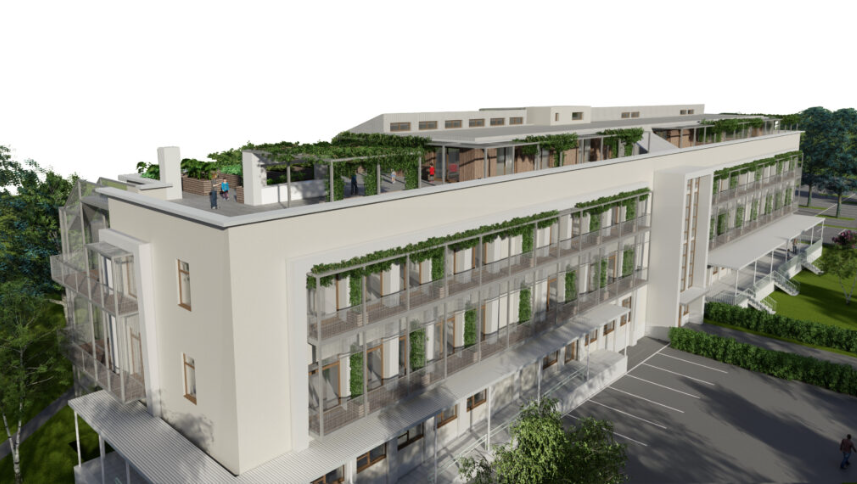
Co-operative housing project in Croatia: the case of the city of Križevci
Created on 15-11-2024
Housing affordability has many interpretations and definitions. Across the European Union, the most common indicator used to measure housing affordability is the price-to-income ratio. According to Eurostat (2023), if a household spends more than forty percent of its disposable income on housing, the household is overburdened with housing costs. Throughout the EU, from 2010 and 2018, the average rate of housing experiencing overburdening rate is approximately ten per cent, although there are significant fluctuations among Member States.
Housing affordability is a complex issue influenced by local housing prices and income levels. It cannot be measured on a national level in absolute terms, given the variation in housing costs and incomes across different localities. For instance, housing may be deemed unaffordable in major Croatian cities, whereas it may be more accessible in smaller mainland towns due to a lower demand. Both homeowners and tenants in Croatia are struggling with an excessive burden of housing costs due to their low income and the low energy efficiency of their homes.
Furthermore, housing prices are influenced not only by housing supply and demand but also by the cost of financial capital, such as the interest rates. When interest rates are lower and financing is more affordable, both individual and institutional investors are incentivized to invest in real estate, particularly in Croatia where the equity market is underdeveloped, and alternative investment options are limited. This phenomenon contributes to market speculation and drives up housing prices, especially for units designated for short-term renting during tourist seasons rather than long-term rentals. As a result, despite an increase in the supply of housing units, there is no corresponding decrease in housing price level.
According to Caturianas et al. (2020), “evidence also shows that secondary property ownership is widely used in many EU Member States as an investment, to supplement absent or low second-tier pension arrangements by those who are inadequately covered by such arrangements.” These developments supported the financialization and commodification of housing markets. What is even more important for countries like Croatia, due to its dependence on tourism, is the following argument: “evidence also shows that foreign investment increases local house prices and reduces the rate of home ownership in the area, especially in places where housing stock reacts more slowly to housing price changes” (Caturianas et al., 2020). The current housing market in Croatia is overheated, as stated by the European Systemic Risk Board (ESRB, 2022). One of the main reasons is the state withdrawal from the housing market, leaving it now subjected to speculative investments. Although this has not yet been addressed in the literature, public discourse in Croatia suggests that the housing units currently on the market are priced unrealistically high by sellers and that a price correction is likely in the near future. Therefore, measures to improve housing affordability should not be universal. For example, increased investment in social or public rental housing in the continent's rural towns would not increase the quality of life of residents, thus other solutions must be sought. Given the lack of national housing strategies and top-down approaches, we examine the emerging bottom-up approach of cooperative housing as a possible solution.
Collaborative housing in EU
One possible direction of housing policy development in Croatia could be towards collaborative housing options. Collaborative housing is an umbrella term for various collective self-organised forms of housing, such as co-housing, cooperatives and other collaborative housing forms (Czischke et al., 2020). What these models share is a strong emphasis on user participation, fostering reciprocal relationships among residents, and promoting mutual respect and solidarity within the community. Financing for these forms usually comes from crowdfunding and alternative financing sources. Often, collaborative housing projects have a target group of residents, e.g. young or the elderly (Czischke, 2018).
A housing cooperative is a model where a property is owned and operated by an association, with members of the association residing in it. Members do not own the dwelling outright but instead own a share of the association’s assets and have the right to use one of its properties (Norden, 2024). Usually, the housing cooperatives use resources pooled from future residents and construct housing. In some models, a cooperative owns the buildings, while the land remains under the ownership and oversight of the local government. This arrangement helps prevent market speculation and ensures that the housing units remain affordable over the long term.
In times of housing crisis, countries such as Italy, Switzerland, and France promoted cooperative housing as a housing option, thereby giving it credibility and legitimacy. However, Croatia inherited a negative connotation associated with the term cooperative housing from the socialist era and still needs to break away from this dependence. Compared to Western countries where collaborative housing is emerging, it is not well-developed in Central and South-Eastern European countries. The housing market in these countries is characterised by low quality dwellings and poor energy efficiency, with a 20-30% rate of housing deprivation (Pósfai & Jelinek, 2022). However, Pósfai and Jelinek (2022) identify two specific obstacles hindering progress in the cooperative housing sector: (1) loan maturities are too short, and (2) the underdeveloped financial market does not support the expansion of activities. Thus, one potential solution is catalytic capital that would bridge the gap of missing long-term financing. One form of this type of financing is a complementary loan. The enabling institutions must be intermediary organisations that collect and structure capital, which they then lend to the end user, while also supporting them in utilising the investment more effectively.
The broad target population for collaborative housing in Central and Eastern European countries primarily includes young people seeking to move out of their parents' home, elderly individuals with low income who live alone, single parents, and tenants facing financial difficulties in paying the rent (Pósfai & Jelinek, 2022). On the other hand, the narrow target group consists of “financially relatively stable, but still unable to solve their housing problems. The potential demand of this group signals a niche in the housing finance market” (Pósfai & Jelinek, 2022). The main goal for this target population is not necessarily homeownership but rather securing stability and affordability in housing.
Co-operative housing pilot project in Križevci, Croatia
Thus far, the co-operative housing in Croatia is in its infancy, limited to pilot projects aimed at understanding the necessary regulatory and financial frameworks needed for cooperative housing to gain popularity and credibility, particularly within niche markets.
The pilot project in the city of Križevci started in 2021 and is a joint project organised by Open Architecture cooperative, cooperative for Ethical Financing, the European cooperative MOBA housing SCE (European Cooperative Society) and the city of Križevci. Over the past five years, these partner organisations have worked together to find a suitable model for cooperative housing in Croatia. The cooperative model in Križevci involves local governments providing land for long-term use through building rights agreements. The main objective of this initiative is to demonstrate the feasibility and necessity of housing cooperatives in the Croatian context, responding to high demand and growing interest from local governments and citizens alike.
The housing is being developed on former military facilities. In 2003, the military vacated the site, and by 2007, the municipal administration had taken over management of the area. They transformed it into a high school, a retirement home, a municipal library, a technology park, and an observatory.
The city plans to grant the housing cooperative the use of the former barracks for a period of 50-75 years, during which the cooperative will be responsible for investing in its reconstruction. The project aims to provide 36 apartments, 260 metres squared of common areas and 240 metres squared of coworking space.
The project has two main objectives: first, to establish the necessary legal, financial and organisational conditions for housing co-operatives in Croatia; and second, to prepare a cooperative pilot project. Through these efforts, the project aimed to lay a foundation for sustainable and community-oriented housing solutions, rooted in co-operative principles and local development. Moreover, the project team developed a proposal for a general model of cooperative housing in Croatia, laying the groundwork for broader implementation across the country. Below is he list of the most important activities and most valuable outputs that were the result of this project.
The most important activities undertaken during the project included:
- Organising numerous educational events with guests from successful European housing co-operatives
- Hosting public presentations and stands on cooperative housing with local and international speakers in cities such as Zagreb, Karlovac, Pula and Zabok
- Analysing the current residential property market and the current legal frameworks
- Preparing presentation materials outlining the cooperative housing model
- Presenting the cooperative housing model to interested parties in various towns, including Koprivnica, Split, Rovinj, Pazin, Labin, Pula, Zagreb, Prelog and Zabok
These efforts aimed to educate, engage and inspire stakeholders across Croatia about the benefits and feasibility of cooperative housing, promoting a sustainable and community-oriented approach to housing development.
The most important outputs derived from the project were:
- Conducting a feasibility study to explore funding options for the reconstruction of the building.
- Organising educational and participatory events with interested citizens and future tenants, including six workshops on the following topics:
- Introduction to cooperative housing
- Establishment and operation of housing co-operatives
- Defining the statutes for the housing co-operative
- Participatory design in collaboration with the future tenants and the city in the development of a design and conceptual plan for the residential building
These initiatives aim to ensure the successful establishment and sustainable operation of the housing co-operative and involve the future tenants in the planning and design process to create a community-oriented housing solution.
In an interview with Goran Jeras, the managing director of the Ethical Finance Cooperative in March 2024, we discussed the primary obstacles to establishing a housing co-operative. He highlighted that one of the main challenges is the short-term nature of available loans, typically lasting two to three years, which are designed for financing projects focused on rapid construction and sale of housing units. To facilitate the development of cooperative housing, Jeras emphasized the importance of local governments providing land or buildings for refurbishment. He proposed that improving conditions for cooperative development could involve creating an institution or organization dedicated to managing and overseeing project financing and implementation. Additionally, Jeras suggested a potential solution from a top-down approach: delaying the payment of VAT (which is twenty-five percent) for construction, thereby reducing the initial project costs.
M.Horvat (ESR6)
Read more
->

